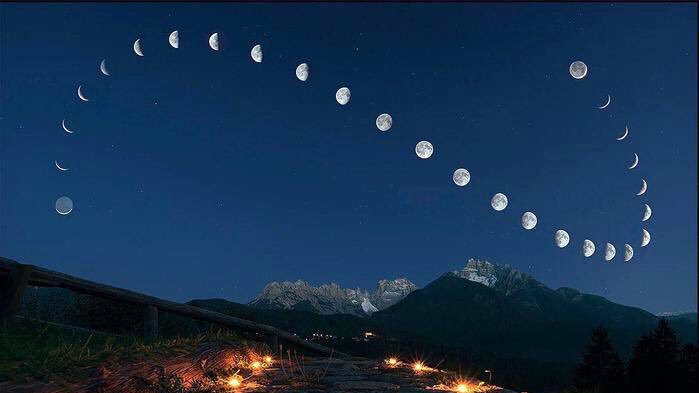The moon and the inverse-square law
I have heard flatties claim that the brightness of the moon and the inverse-square law proves that the moon could NOT be 238 thousand miles away. All this proves is that some people do not understand the inverse-square law. A crude explanation is when you double the distance, you quarter the power density (number of photons in the same "window"). If you triple the distance, the result is 1/9th the power density.
The equation
The equation is "near distance divided by the square of the farther distance". So if the near distance was 2 feet, and the farther distance is 4 feet, 2 / 4² = 0.25 (or 1/4). In that case, we doubled the distance, which resulted in 1/2 the power density. I'm fairly sure we all get that part.
How the inverse-square law is applied improperly
Here's what some flatties don't seem to get[1]. Sunlight travels about 93 million miles to the Earth. The moon is 238k miles from the Earth. Let's round up to a quarter million. So when the moon is on the side of the Earth nearer to the sun, that light traveled 92.75 million miles to hit the moon. When the moon is on the far-side, the light reflecting off it traveled 93.25 million miles to the moon. We will ignore the remaining trip from the moon to the Earth. 92.75 / 93.25 = 0.989304889706675.
The result
This means when we look at the moon while it is at farthest point from the sun, it will be at only 98.93% of it's maximum brightness due to the inverse-square law.
Here is a simple experiment that proves I am right:
- Stand 5 feet from a building during daylight, and notice how bright it is.
- Move to 10 feet away, and note how bright it is. Is it 1/4 as bright?
- Move to 20 feet away, is it now 1/16 the original brightness?
- Now move to 40 feet away. Is it 1/64th the original brightness?
This is why we cannot just apply the inverse-square law to any situation.
One other thing
It is important to note is that the inverse-square law only applies to unfocused emissions. A laser pointer has an almost identical power density at 10 feet that it has at 20 feet, but if you tried to apply the inverse-square law to it, you would expect it be at quarter power when at 20 feet. A laser pointer is very focused. By the time sunlight has travelled 93 million miles, it is also very focused.
And:
One big thing to realize is that the inverse square law refers to the total amount of light sent by an object that's received by a receiver (like a camera or eyeball). Imagine you're standing ten feet away from an object, and you're receiving 1 candela from the object; you move so you're twenty feet away, and now you're receiving 1/4 candela. Reasonable, right?
But note that you're now twice as far away, so the object also appears half as large along each direction. That 1/4 candela is concentrated into an area one quarter as large. If you had a laser-tight brightness point-sensor, and you pointed it at the object,
you would find that the object is exactly as bright as it was before, it's just smaller. The total amount of light you're receiving is smaller, but it's smaller
exactly proportional to the size of the object.
The thing that's almost counterintuitive is that
you cannot make something dimmer by moving further away, you only make it smaller. Eventually it's so small that you can't perceive it as having any actual size, but even then, with a sufficiently powerful telescope, you'll discover that it's still not getting any dimmer (per solid arc), just smaller (less solid arc).
(Unless there's dust or gas or something in the way, of course.)
Taken from Reddit.




